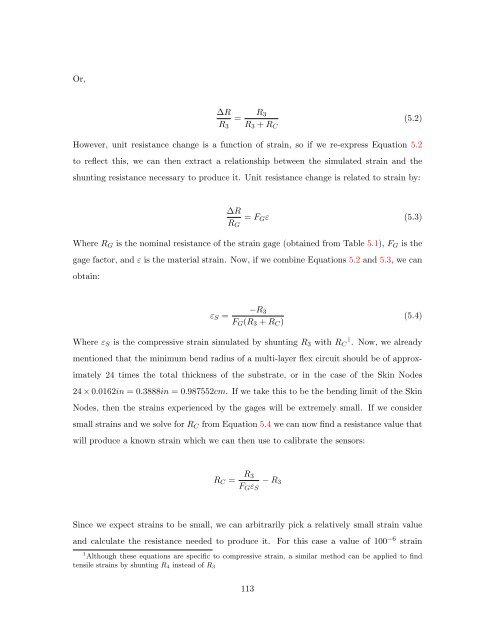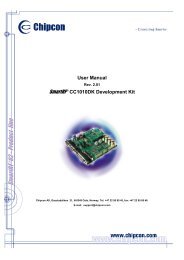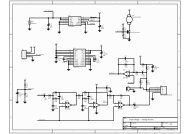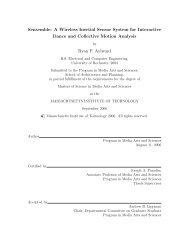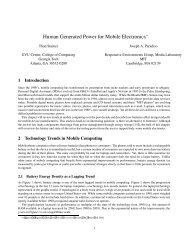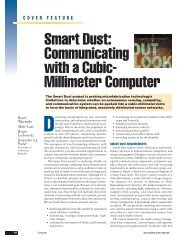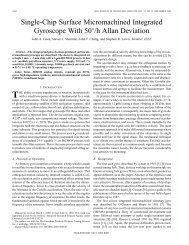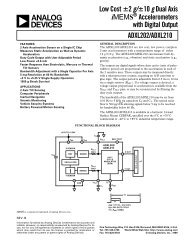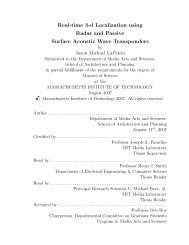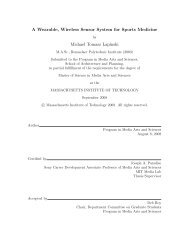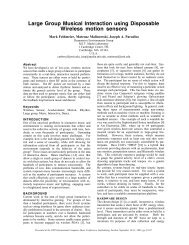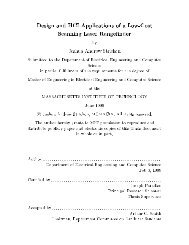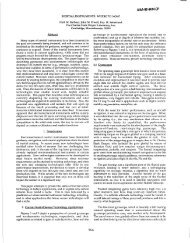S.N.A.K.E.: A Dynamically Reconfigurable Artificial Sensate Skin ...
S.N.A.K.E.: A Dynamically Reconfigurable Artificial Sensate Skin ...
S.N.A.K.E.: A Dynamically Reconfigurable Artificial Sensate Skin ...
Create successful ePaper yourself
Turn your PDF publications into a flip-book with our unique Google optimized e-Paper software.
Or,<br />
∆R<br />
=<br />
R3<br />
R3<br />
R3 + RC<br />
(5.2)<br />
However, unit resistance change is a function of strain, so if we re-express Equation 5.2<br />
to reflect this, we can then extract a relationship between the simulated strain and the<br />
shunting resistance necessary to produce it. Unit resistance change is related to strain by:<br />
∆R<br />
= FGε (5.3)<br />
RG<br />
Where RG is the nominal resistance of the strain gage (obtained from Table 5.1), FG is the<br />
gage factor, and ε is the material strain. Now, if we combine Equations 5.2 and 5.3, we can<br />
obtain:<br />
εS =<br />
−R3<br />
FG(R3 + RC)<br />
(5.4)<br />
Where εS is the compressive strain simulated by shunting R3 with RC 1 . Now, we already<br />
mentioned that the minimum bend radius of a multi-layer flex circuit should be of approx-<br />
imately 24 times the total thickness of the substrate, or in the case of the <strong>Skin</strong> Nodes<br />
24 × 0.0162in = 0.3888in = 0.987552cm. If we take this to be the bending limit of the <strong>Skin</strong><br />
Nodes, then the strains experienced by the gages will be extremely small. If we consider<br />
small strains and we solve for RC from Equation 5.4 we can now find a resistance value that<br />
will produce a known strain which we can then use to calibrate the sensors:<br />
RC = R3<br />
FGεS<br />
− R3<br />
Since we expect strains to be small, we can arbitrarily pick a relatively small strain value<br />
and calculate the resistance needed to produce it. For this case a value of 100 −6 strain<br />
1 Although these equations are specific to compressive strain, a similar method can be applied to find<br />
tensile strains by shunting R4 instead of R3<br />
113


